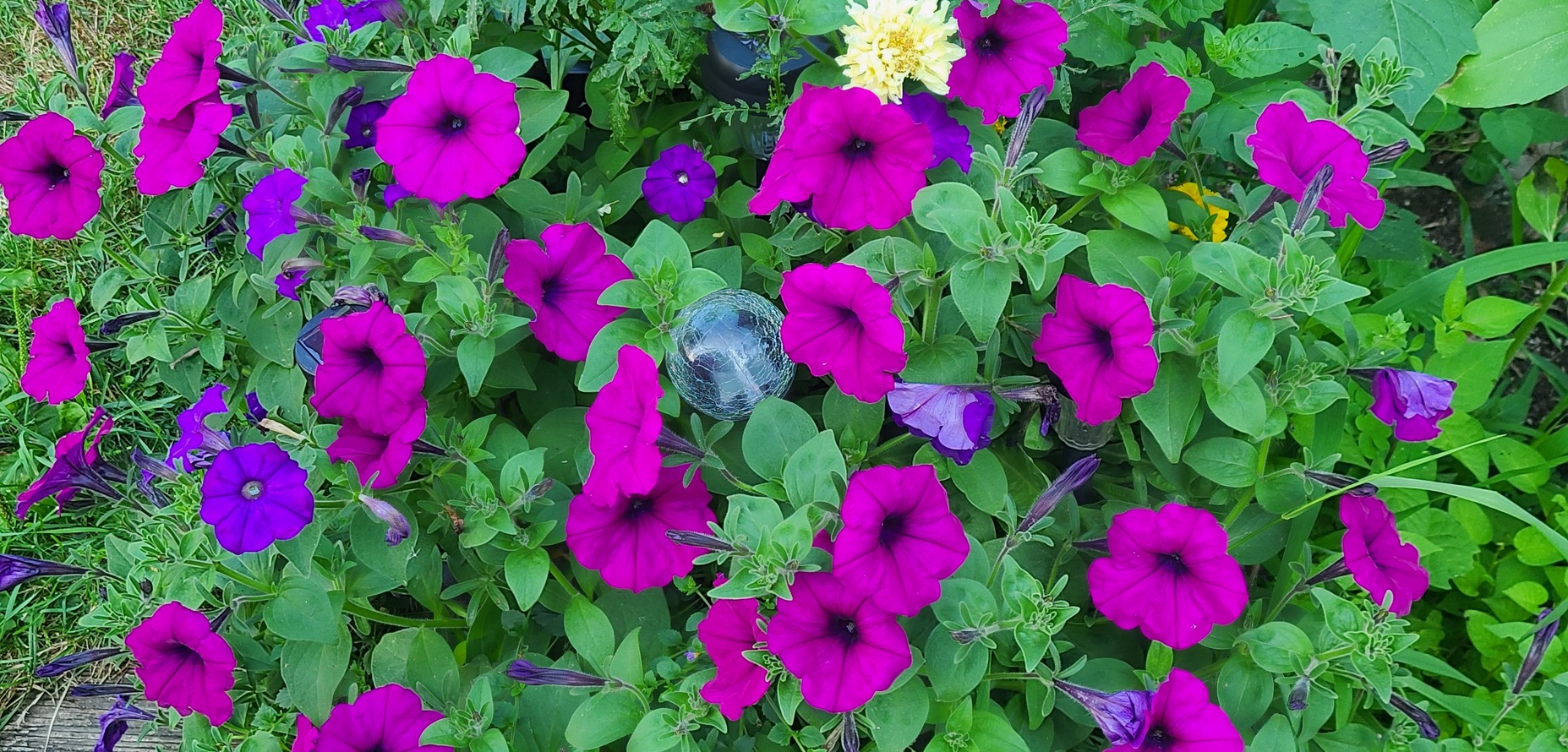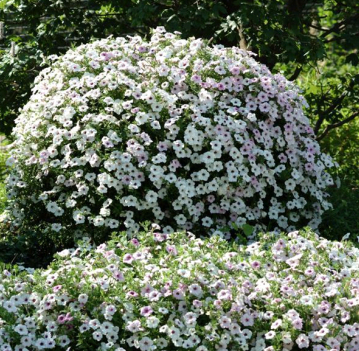
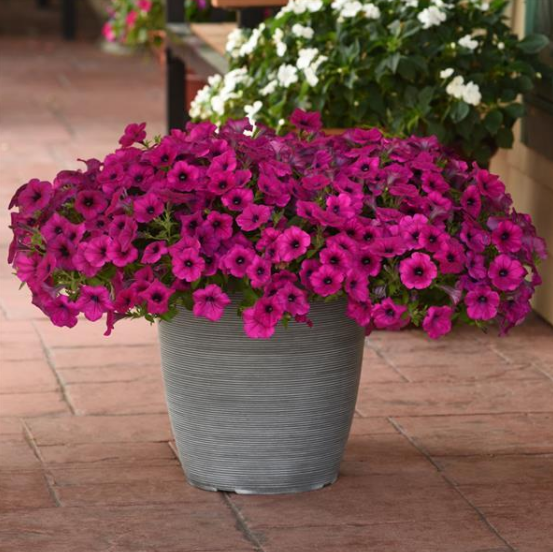
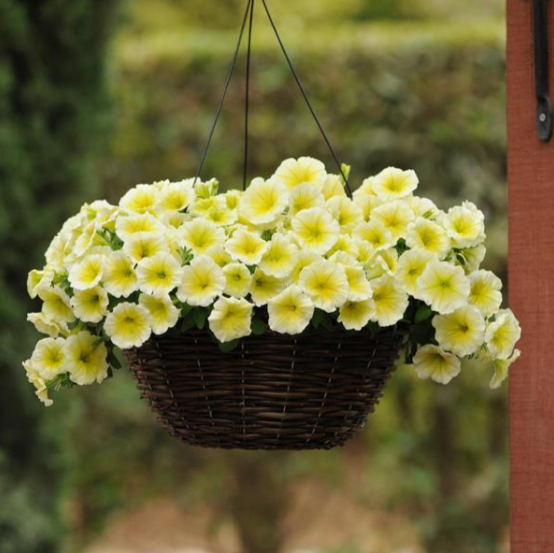
Hanging baskets are a beautiful part of the summer. Whether they’re hanging in your city’s downtown, or over your porch, they always deliver a punch of colour.
They’re also quite expensive to buy in-season, especially when they’re purchased from somewhere convenient like a grocery store. These days, seeing prices of up to $75+ per planter is almost typical, particularly for the large ones. Reasonably so, since some of the plants used in them can be quite expensive, and the planters require a good degree of time and effort from the growers.
Acclimation Issues
Since planters or hanging baskets grown in a greenhouse are grown in a controlled environment, they’re not fully acclimated to your property’s climate when you buy them. They often contain fully matured plants that are occupying most of the container’s medium with a significant root mass. They also have significant water requirements right from the start! These lovely planters are beautiful from the start, right until you get a sunny, hot day and you forget to water them one morning. Goodbye $75 planter!
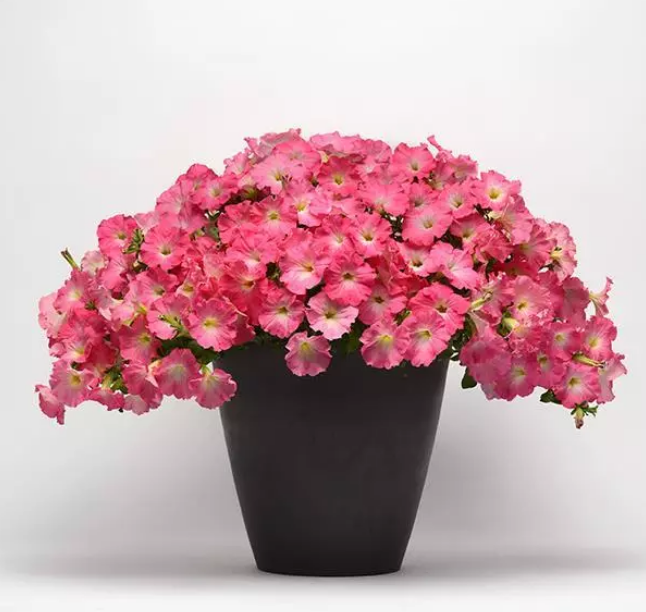
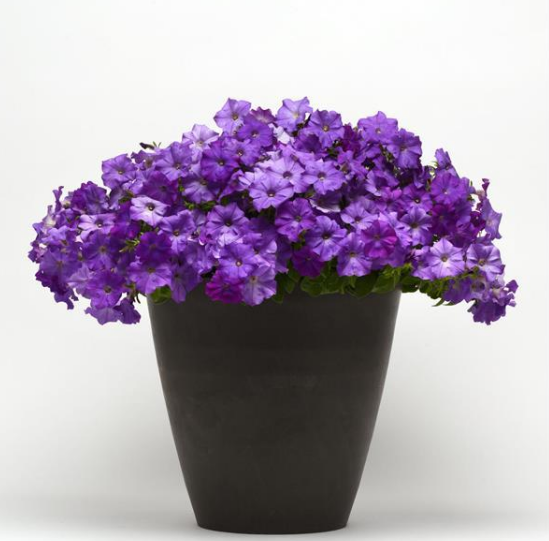
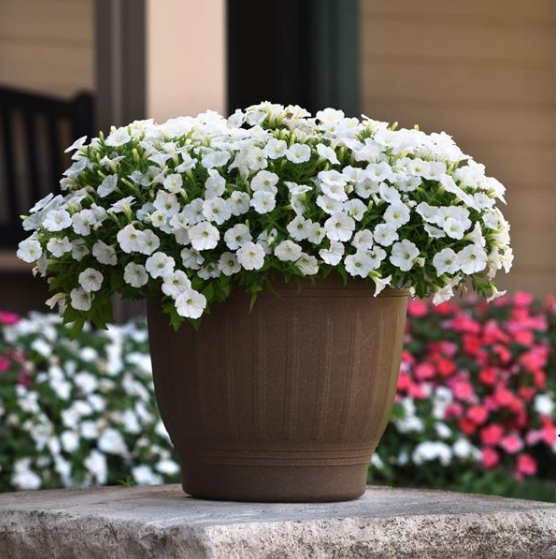
Growing Your Own Can be Better
Instead of spending a ton, take advantage of the sun by growing your own. Tee’s Plants has several EASY planter ideas that you can DIY for quite cheap, and we offer all of these varieties! The best part? You can choose the colors you want to include, instead of picking what someone else chose for you! Check out the combos below and see how easy it is to assemble a planter. All of these plants are available at Tee’s in the spring, but you can get them at many nurseries.
Wave Petunia DIY Planter = $5+
Several colors and types of Wave petunias are available. They’re probably the classic hanging basket flower in my opinion. They like full sun, so if you have a shady spot don’t put these there!
Easy Wave has a bushier, ball appearance. A typical mounding growth habit.
Tidal Wave is a spreading petunia. This one will even grow up a small trellis with a bit of training. Tidal Wave petunias have an impressive value!
Wave Classic is the original Wave petunial. They provide more of a “spilling” growth habit which is very popular in hanging baskets.
Shock Wave has smaller flowers than Easy Wave, but a similar mounding growth habit.
- 12″ pot or bigger optimally
- 1-3x Plants per Pot: If you can’t water often or on a guaranteed schedule, try to plant only one petunia per pot. If you’re a religious waterer, you can definitely survive with 2-3 plants per pot.
- 1x Plant per Pot: If you use Tidal Wave petunias, using only 1 plant per pot will satisfy a 12″ container quickly, so try to use larger pots for combinations of Tidal Wave petunias if that’s your plan. Thank me later! Try a larger pot and 3 Tidal Wave petunias!
Wave Fuseable DIY Combos = $10 to $15
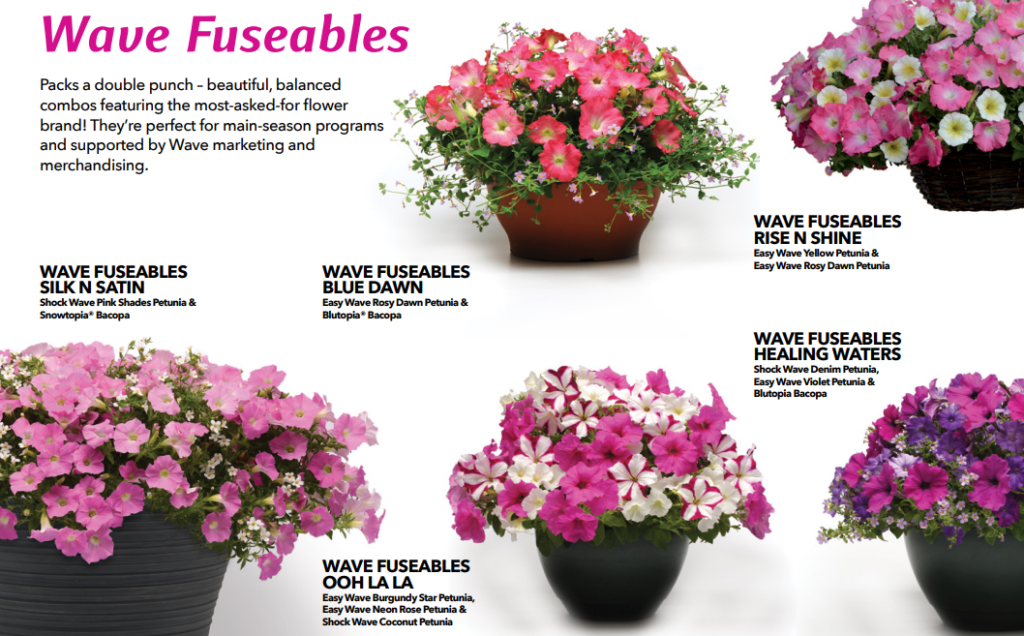
Use simple combinations of Shock Wave, Easy Wave, Bacopa to build your own custom look.
Best planted in full sun. Unique mix-and-match combos are as easy as it gets! Shock Wave, Easy Wave, and selected Bacopas grow very well together!
- 12″ pots (or larger) are recommended for these beauties.
Beacon Impatiens DIY Pots $6-$9
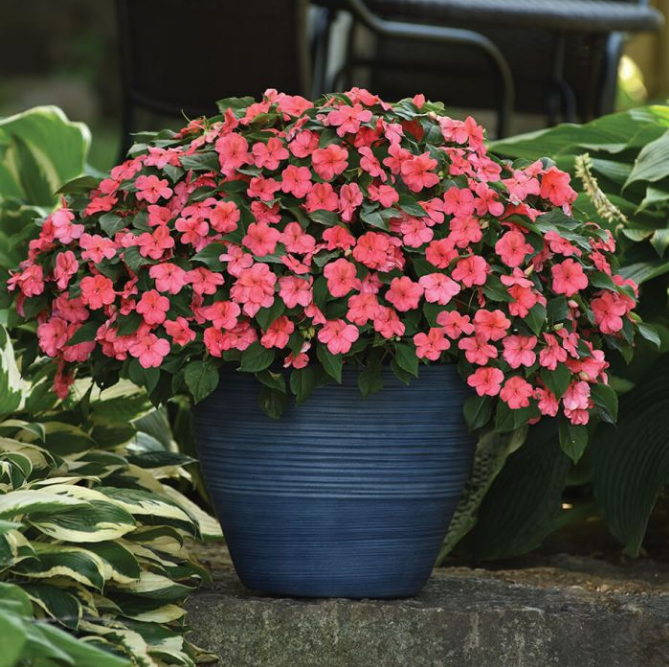
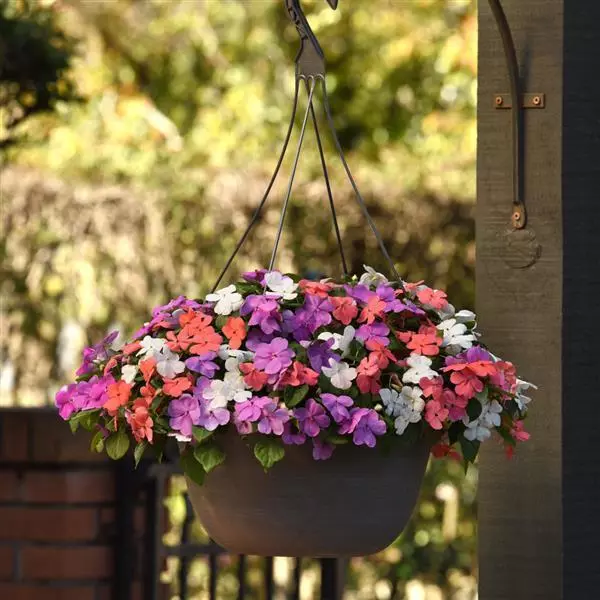
A very popular flower from Tee’s Plants. With lots of colors to pick from, they’re a popular ornamental flower selected for their ability to deliver high-quality color in the shade, like a north-facing balcony or porch. They can also tolerate partial sun. These impatiens have been bred with resistance to impatiens powdery mildew, allowing them to be re-introduced into the ornamental market over the past few years.
- 10″ pot or bigger optimally
- 2x-3x Impatiens. Tee’s Plants sells larger impatiens plugs than most, and they’ll be winning over your neighbors compliments by July.
Bacopa DIY Basket $5
Cute creeping flowers that don’t have much scent at all. Grows best in full sun. It can do fine with a bit of shade, but don’t let it dry out!
- 10″ or larger pot, only 1x is required, but adding more according to the pot size will provide a fuller look.
- Available in Blue, Purple, and White for 2025. Combine all 3 if you want.
Alyssum DIY Pot $3 to $9
Small trailing flowers that are great for pollinators. Comes in purples, pinks, and whites. Does well in full or partial sun, and smells great!
- 10″ pot or bigger optimally, don’t let them dry out!
- 1x-3x Alyssum per pot. Tee’s Plants alyssum come with several plants per pot, so if you wanted to achieve the ultimate value you could break apart our alyssum transplants early in the season, and plant them as you please!
How to Prepare the Planters
You’re going to need a few things to keep your planters healthy and popping with colour.
- Potting mix – Many potting mixes will work well. Promix, and Miracle Gro soils are commonly available names in Ontario, and will work great for most planters and baskets. I use both Promix HP and Promix All-Purpose that comes in the large compressed bales. They’re worth the investment if you use a lot of potting mix! Make sure you don’t use products labeled as “top soil”, or other regular garden soil like Black Earth. These products are too heavy and won’t hold water for your planters effectively for your plants.
- Container – I recommend 12″ containers as a safe minimum for outdoor plants. Consider using a larger pot if you can’t water on a guaranteed schedule, or if you plan to create combinations of 3 or more plants. It’s no fun to lose an entire planter when you forget to water a single day, so don’t plant too many plants in a small pot!
- Fertilizers – I recommend you use two kinds, but you can get by with either one by themselves.
- Slow Release Bloom – Something like Miracle-Gro Shake n’ Feed Ultra Bloom. You can consider skipping this if your soil comes loaded with fertilizer already, but I still use some according to the top dressing instructions on the container.
- Liquid Concentrate – Something like Miracle-Gro’s 15-30-15 or 20-20-20. You should probably have this on hand for your garden regardless, or maybe you have an organic supplement. That will work too, but check on the application requirements. Note that I don’t particularly recommend Miracle-Gro products over others, it’s just easy for everyone to find. My organic fertilizer of choice is Gaia Green’s 4-4-4, but it’s quite expensive comparatively and doesn’t really have an instant effect on plants.
Building the Planters to Survive the Heat
- Take your container, and fill it about 2/3 of the way with your quality potting mix.
- Add your slow release fertilizer granules according to the broadcast instructions. Don’t use too much. Mix it into the top inch or so of soil a bit.
- Determine how deep you need to dig to accommodate for your transplants. Aim for the soil level of your planter to be around 1″ below the planter rim. Gently dig the shallow holes and place your transplants into them.
- Add soil, until filled to around 1″ below the planter rim, gently pressing making sure there are no air pockets around the transplants.
- Water gently, avoid wetting the plants if possible.
- Fertilize with Water Soluble fertilizer at 1/2 to 2/3 of the recommended strength every 2 weeks the entire summer. Set a calendar reminder or pick a day of the week to remember, like every other Tuesday.
- Add slow release fertilizer again in August, this will nourish your plants with essential elements for their final stretch Frost. You can start to decrease the water soluble fertilizer applications if you’d like in October.
All in, you’re probably looking at less than half of the cost of a prepared planter. And you get to say you made it! There are lots of other easy planters you can do. Marigolds planters are a popular economical classic, too.
